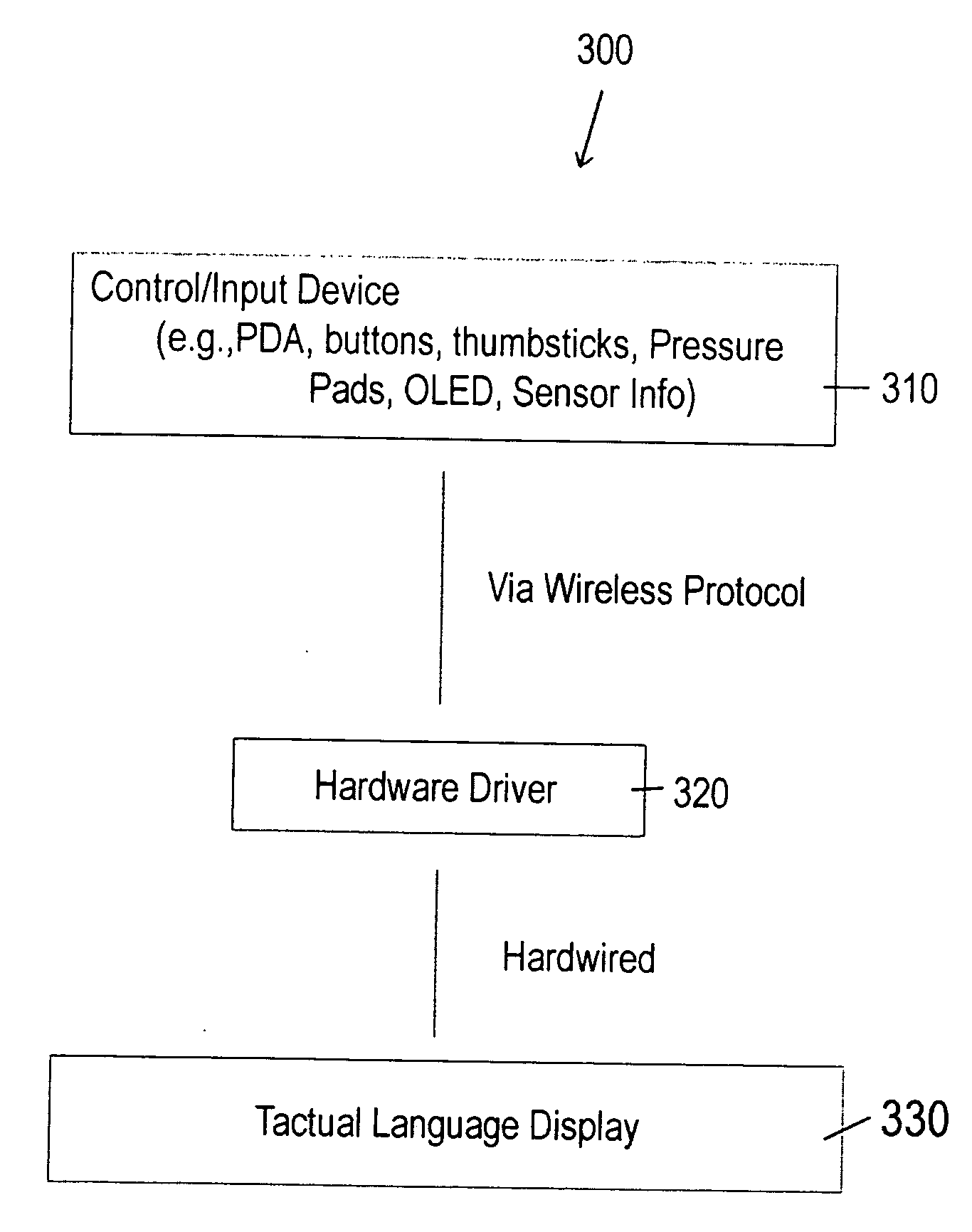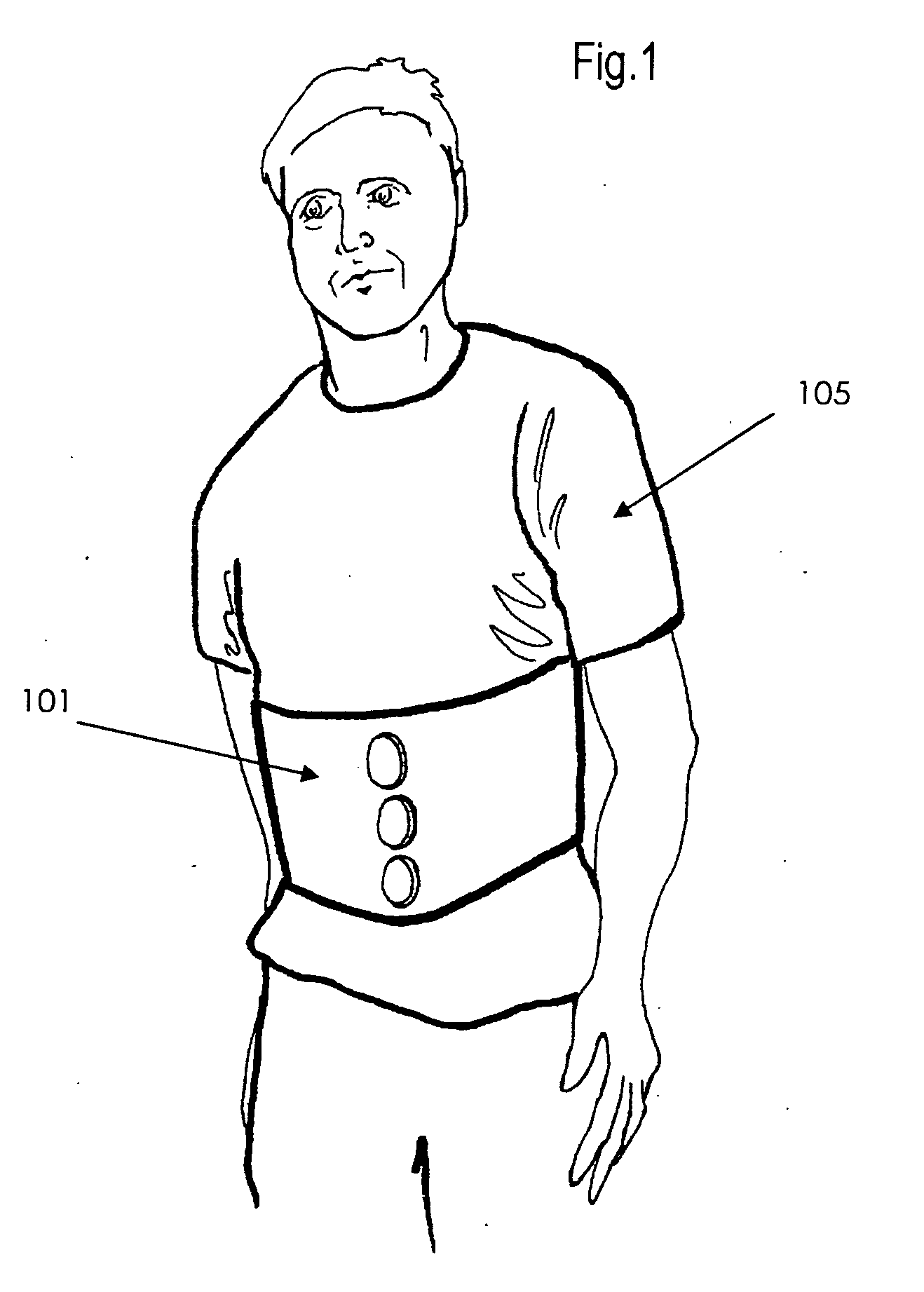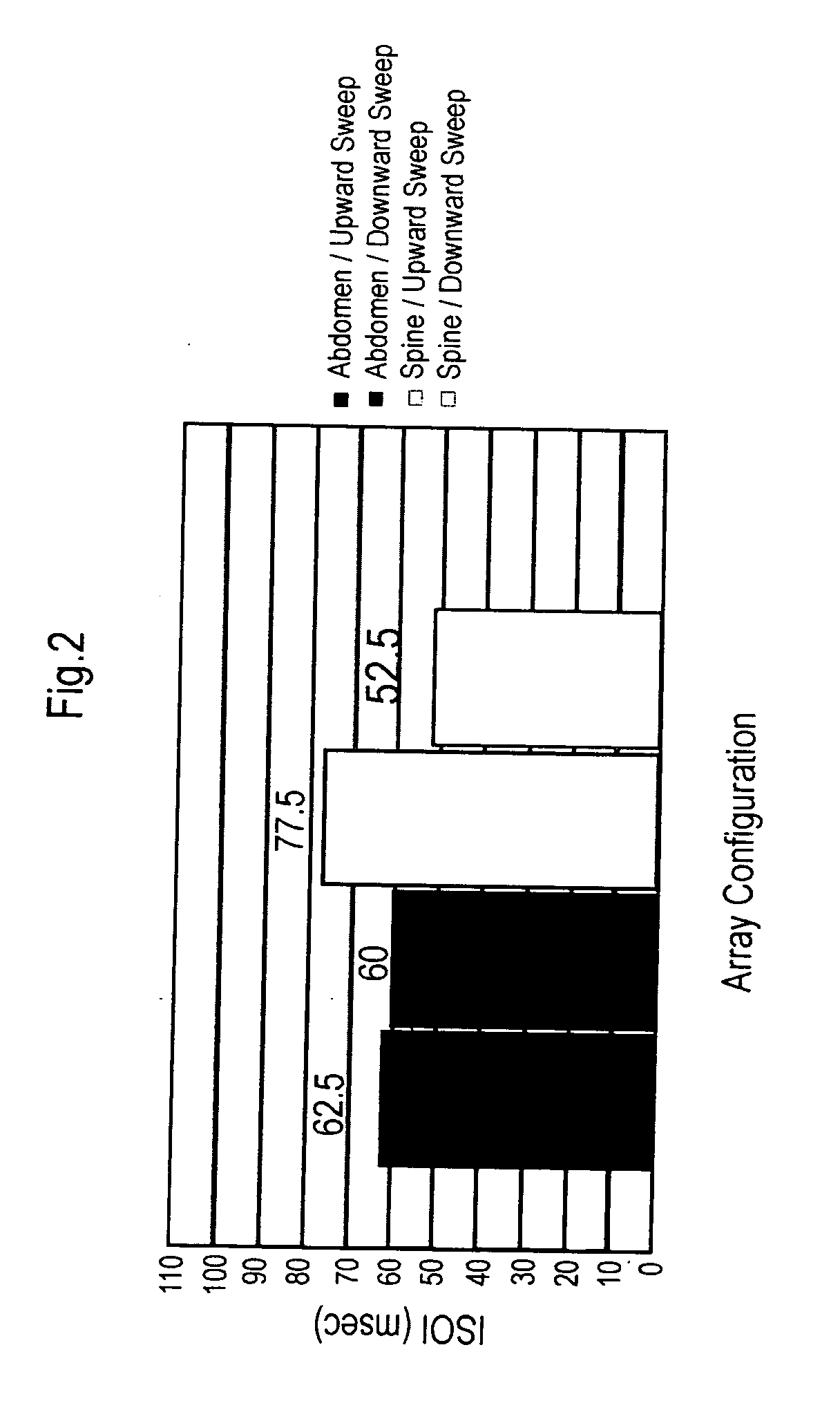Electromagnetic field tactile display interface and biosensor
a biosensor and tactile display technology, applied in the field of communication, can solve the problems of ineffective communication methods, inability to rely on verbal or visual based systems, and inability to accept and/or practice traditional verbal communication devices and systems such as phones,
- Summary
- Abstract
- Description
- Claims
- Application Information
AI Technical Summary
Benefits of technology
Problems solved by technology
Method used
Image
Examples
Embodiment Construction
[0038] Before explaining the disclosed embodiments of the present invention in detail it is to be understood that the invention is not limited in its applications to the details of the particular arrangements shown since the invention is capable of other embodiments. Also, the terminology used herein is for the purpose of description and not of limitation.
[0039] The following is a list of the reference numbers used in the drawings and the detailed specification to identify components:
100vibrotactile waistbelt101elastic belt110electromechanical transducers120vertical array ofelectromechanical transducers130cabling140computer driver150power supply160power cord170electromagnetic field sensor200manually activated input device210tactile cue switches220position switches300hardware configuration310input device320hardware driver330tactile language display
[0040] One way of communicating through the sense of touch is via transducers, speaker-like devices that vibrate against the skin. Trad...
PUM
 Login to View More
Login to View More Abstract
Description
Claims
Application Information
 Login to View More
Login to View More - R&D
- Intellectual Property
- Life Sciences
- Materials
- Tech Scout
- Unparalleled Data Quality
- Higher Quality Content
- 60% Fewer Hallucinations
Browse by: Latest US Patents, China's latest patents, Technical Efficacy Thesaurus, Application Domain, Technology Topic, Popular Technical Reports.
© 2025 PatSnap. All rights reserved.Legal|Privacy policy|Modern Slavery Act Transparency Statement|Sitemap|About US| Contact US: help@patsnap.com



